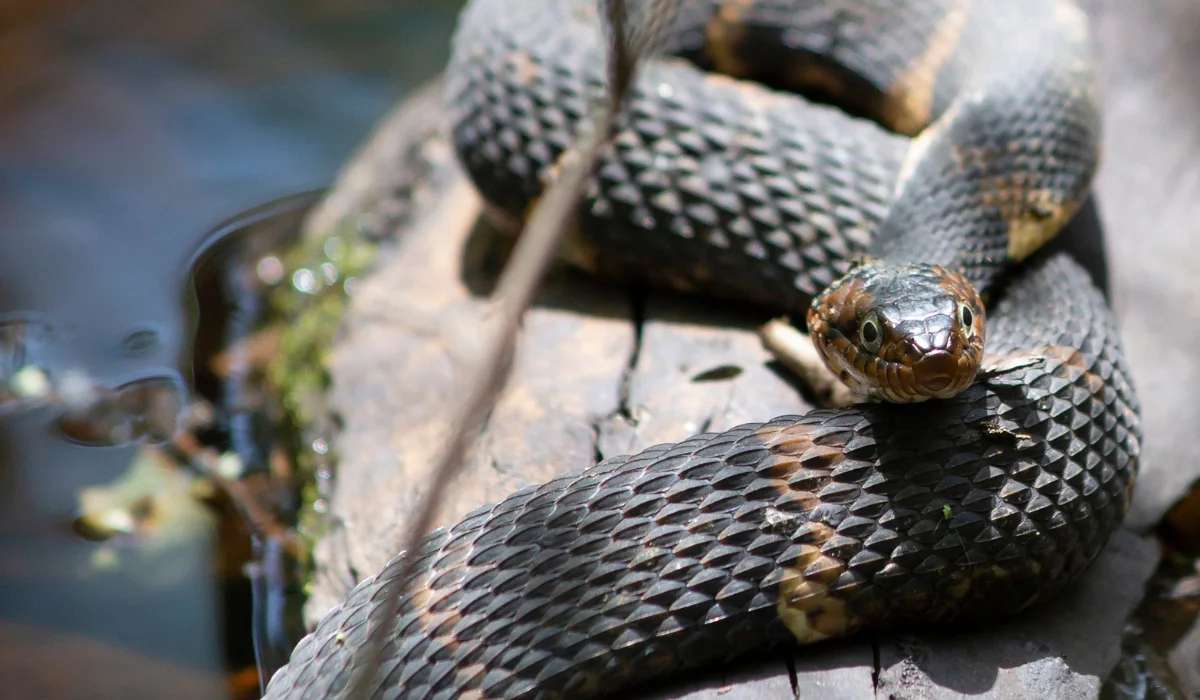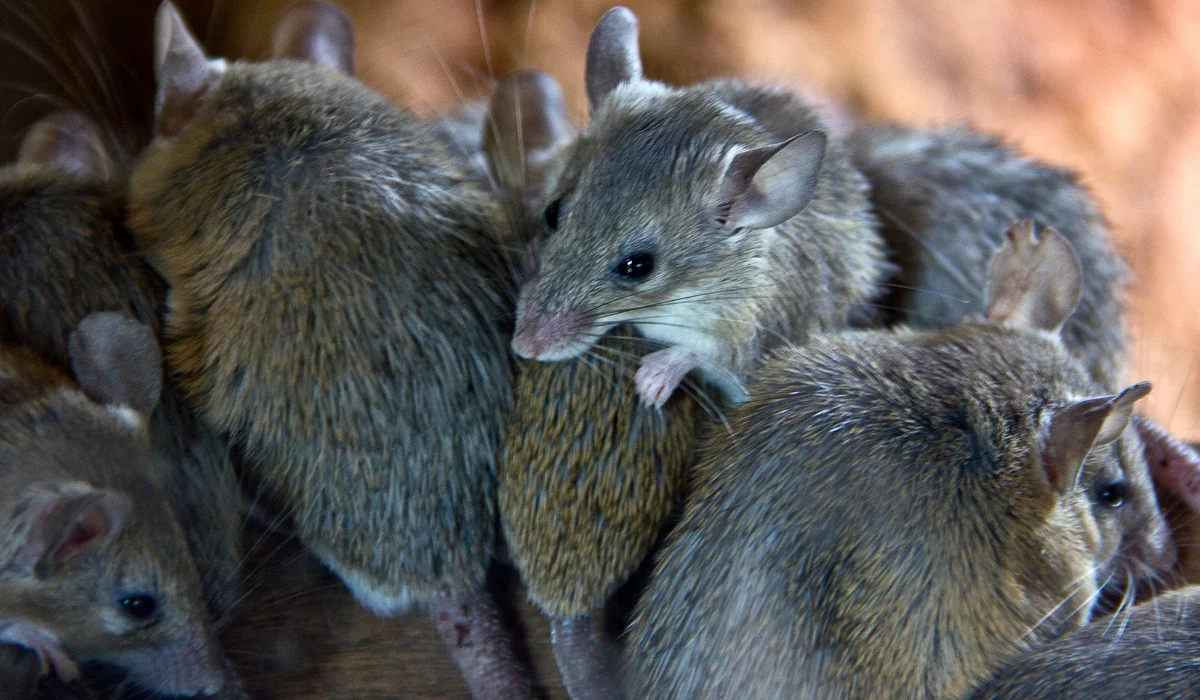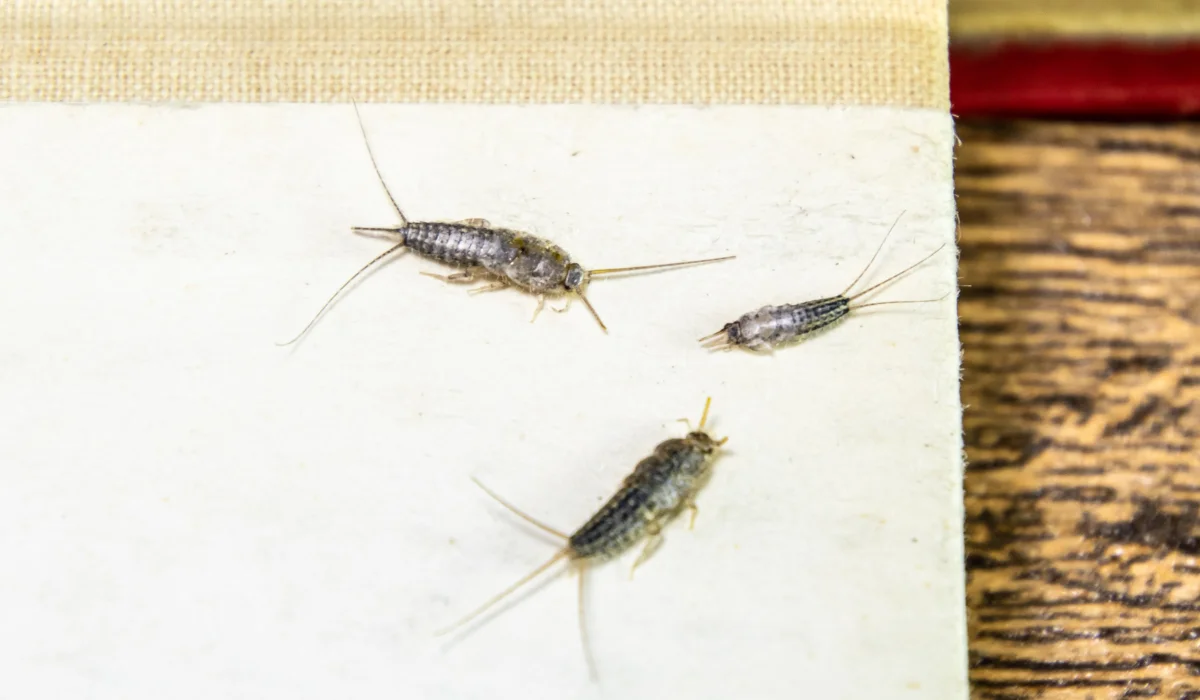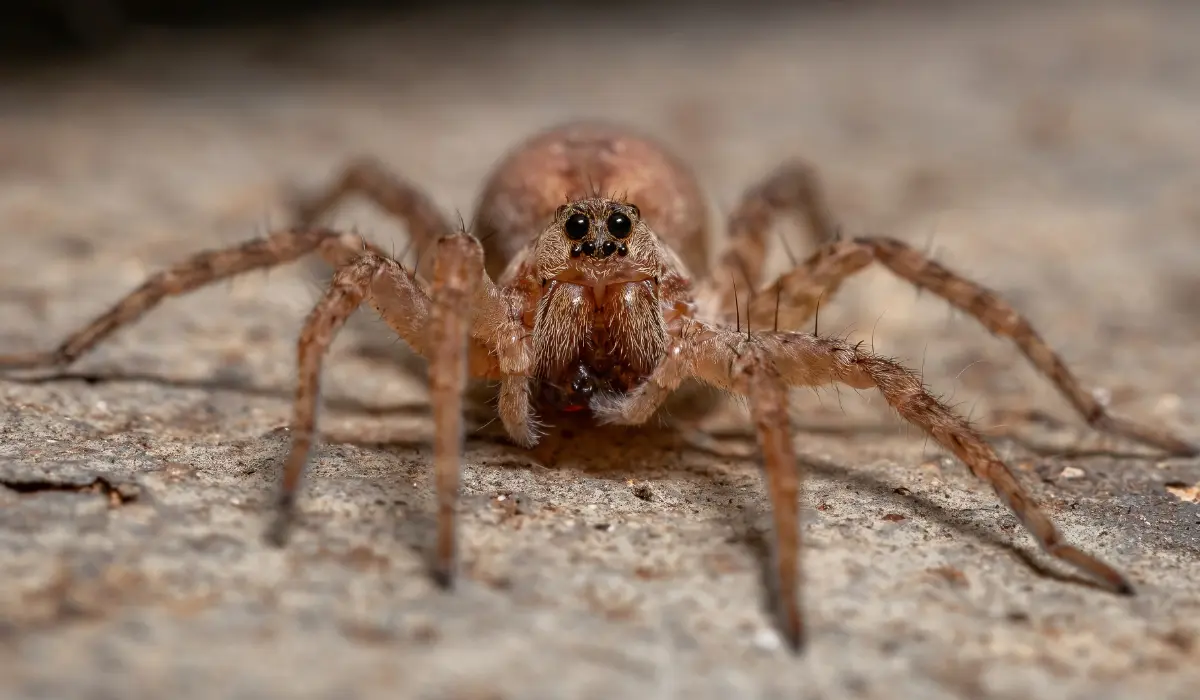You see a dark, banded snake near your bayou and immediately wonder if it’s dangerous. Your first thought? Probably cottonmouth. But chances are, you’re looking at a banded water snake, a nonvenomous but often misunderstood resident of Louisiana’s wetlands.
In this guide, you’ll learn how to tell them apart from their venomous cousins, where you’re likely to find them, and how to safely keep them away from your property.
Key Takeaways
• A banded water snake is nonvenomous and often confused with a cottonmouth because of its large size.
• These snakes live in freshwater across Louisiana, Texas, North Carolina, and central parts of North America.
• Common behaviors include basking, feeding on amphibians and fish, giving birth to live young, and releasing strong musk.
• The best way to avoid them is by clearing clutter, sealing gaps, removing food, and calling for expert help.
What Is a Banded Water Snake?
The banded water snake is a nonvenomous, aquatic snake commonly found in freshwater habitats across the southeastern United States.
It’s often discussed in herpetology not just because it’s mistaken for the venomous cottonmouth, but also because of its size. Adults can reach a total length of up to 48 inches, which adds to their intimidating appearance.
You can find different subspecies like:
• Southern Water Snake
• Broad-Banded Water Snake
• Florida Banded Water Snake
To help you tell them apart from other snakes in Louisiana, here’s what you should know:
Coloration and Body Markings
Banded water snakes come in a range of colors from reddish to dark brown, typically with darker blotches or crossbands across their back. These patterns fade with age but help them blend into the wetlands and shallow water areas they inhabit.
They also feature keeled scales, giving them a rough texture, and a noticeable dark stripe running from the eye to the angle of the jaw.
Typical Habitats in the Region
These snakes are water lovers through and through.
You’ll find them in swamps, bayous, ditches, and slow streams where they thrive in freshwater conditions. Along with Louisiana, they’re also common in other Southern states like Texas and North Carolina.
Unlike the northern water snake, which ranges as far north as New York and Boston, these snakes are right at home in the warm, wet climates of the North American coastal plain and throughout central North America.
Diet and Feeding Behavior
Banded water snakes feed heavily on amphibians like tadpoles and salamanders, plus small fish and crayfish. Their feeding habits help keep these populations in check, supporting the broader ecosystem.
Basking and Daily Movement
It’s not uncommon to see one of these snakes basking on a log in the sun. It’s part of their routine. They warm up during the day and become more active at night, often slithering through shallow water in search of food.
Defense Mechanisms
When threatened, these snakes may flatten their bodies, release a foul-smelling musk, or even strike—but it’s all bluff. They’re more scared of you than you are of them.
Remember, they’re nonvenomous and nothing like a venomous cottonmouth despite the resemblance.
Reproduction and Local Sightings
Instead of laying eggs, banded water snakes give birth to live young, often in late summer. It’s not unusual to find multiple juvenile snakes near a pond or marsh, especially after a hot, rainy season here in the South.
How to Prevent Banded Water Snakes on Your Property
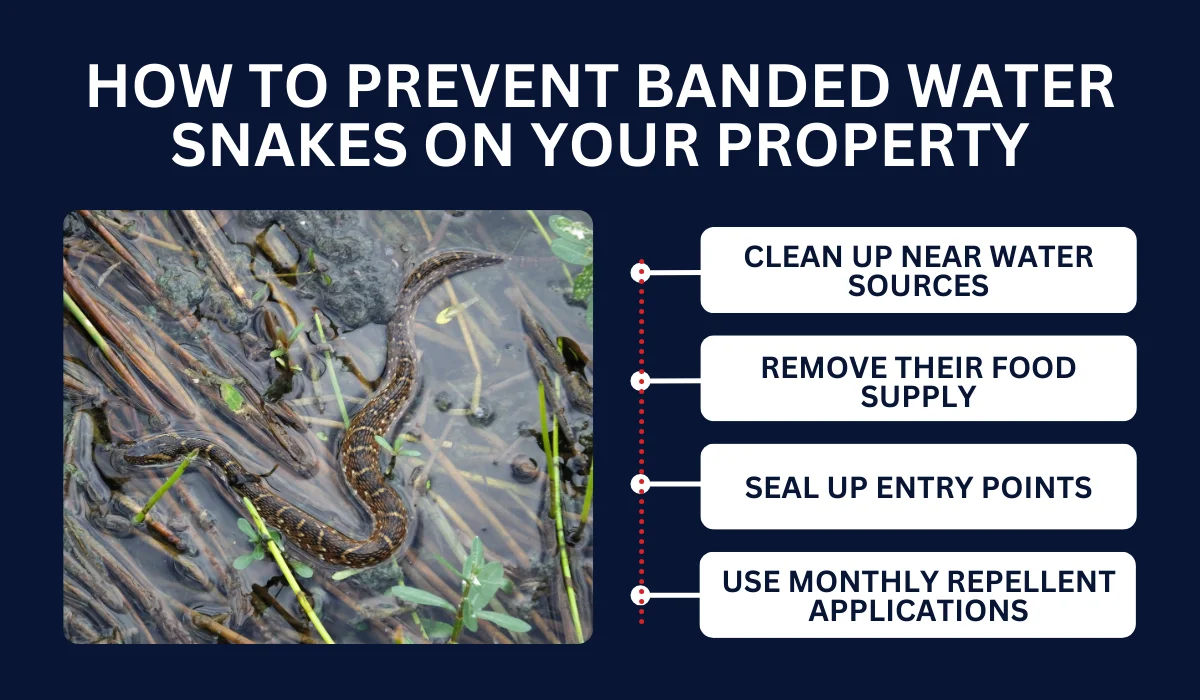
If you’ve had a snake sighting—or just want to avoid one—there are a few simple things you can do to make your yard less inviting.
Here’s how you can keep them from showing up around your home:
Clean Up Near Water Sources
Snakes don’t like wide-open spaces. If your yard has thick brush or old wood piles near a pond or ditch, that’s prime real estate for a snake.
Cutting back overgrown plants and keeping things tidy goes a long way in making your property less attractive to aquatic snakes.
Remove Their Food Supply
If your backyard is hopping with frogs, tadpoles, or other amphibians, don’t be surprised if a snake comes by for dinner.
Limiting standing water and treating ponds or ditches can help reduce their food supply.
Seal up Entry Points
Check crawl spaces, garages, and even sheds for gaps. Use hardware cloth or sealant to close off potential hiding spots.
This also keeps out rodents and bugs that attract snakes in the first place.
Use Monthly Repellent Applications
Our team at LaJaunie’s Pest Control applies Serpent Guard, a repellent designed to keep snakes like the banded water snake from crossing into your space.
It’s part of our regular snake repellent service and comes with a 30-day guarantee.
Safety Tips if You Encounter a Banded Water Snake
If you come across a snake on your property, it’s important to know how to respond without putting yourself at risk.
Here’s what you should do to stay safe and avoid making the situation worse:
Observe From a Distance
If you see a snake near a water feature, give it space. It’s probably just doing its thing, and it’ll retreat once it senses you’re not a threat.
Don’t Play Hero
Trying to kill or catch the snake is not just dangerous—it’s unnecessary. The banded water snake has no interest in biting unless provoked.
Learn to ID It Properly
Banded water snakes are thick-bodied like the cottonmouth, but their heads are less angular and their pupils are round, just like the brown water snake and green watersnake, which also get mistaken for venomous snakes.
You’ll also notice they lack the tell-tale white mouth of the cottonmouth when threatened.
Call for Professional Help
Seeing snakes often? Give us a call.
We offer wildlife removal and monthly repellent services. Even if we don’t find the snake, we treat the area to make sure it doesn’t become a recurring problem.
 By: LaJaunie's Pest Control
By: LaJaunie's Pest Control 